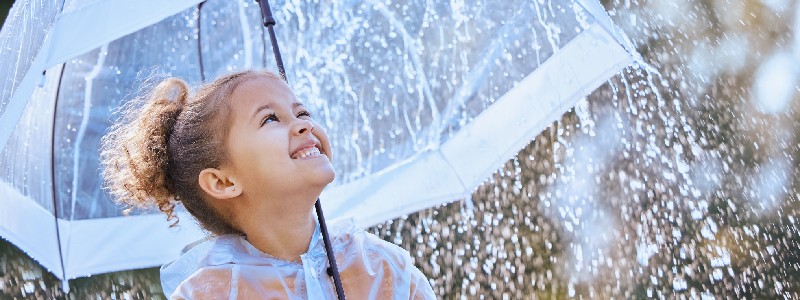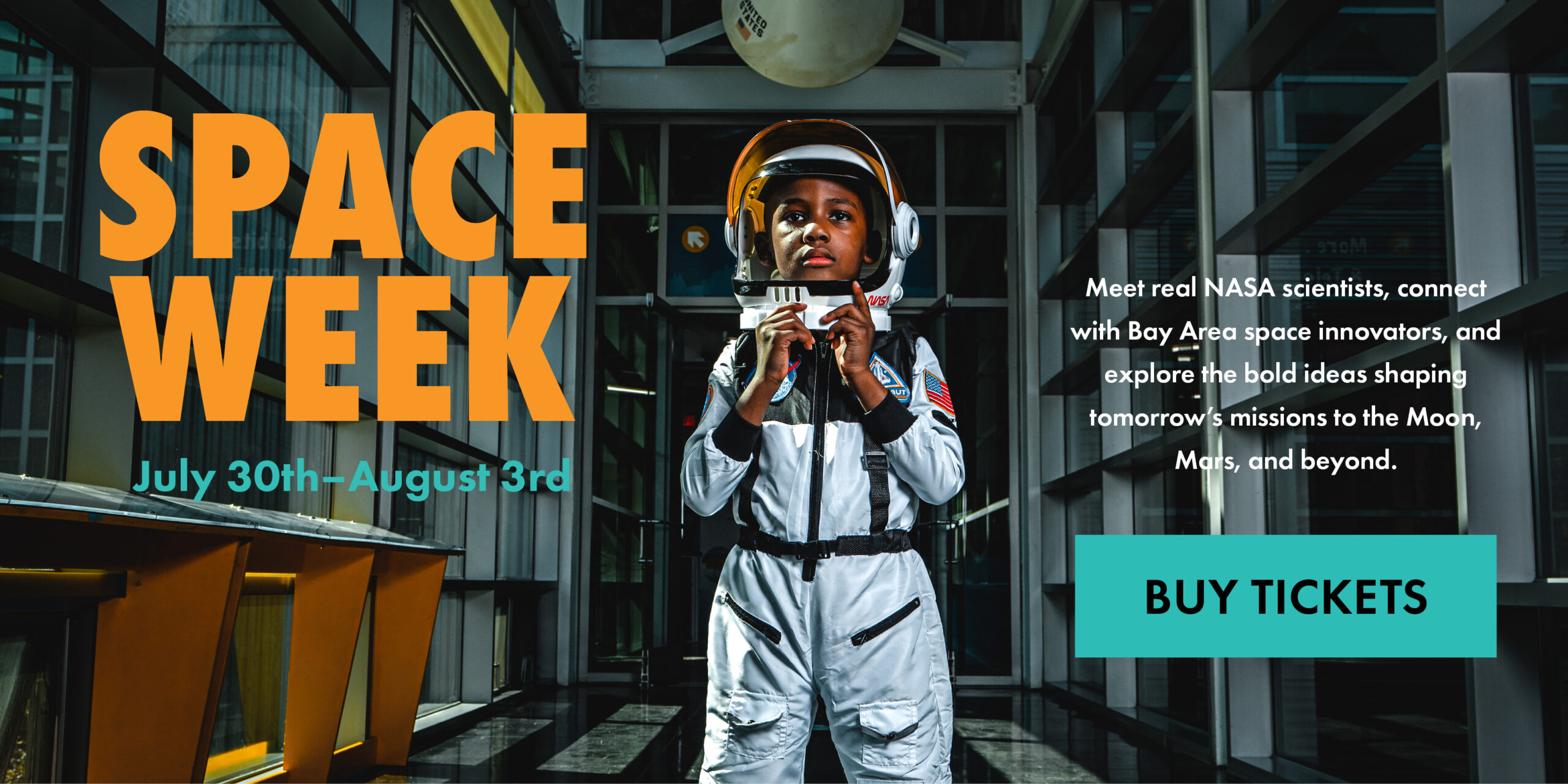
- This event has passed.
First Friday Climate Series: What is Weather?


Friday, May 5
6-10 p.m.
All ages, family-friendly. Adults $15, Kids/Seniors $10, Members $5
Ever wonder what happens in our atmosphere that can make it cold and rainy one day and hot and dry the next? Weather is a series of events that result in some amazing and downright fascinating effects. But how does this all work? Come learn from meteorologists and scientists how our weather works and what researchers do to track its changes. Learn about our own microclimates in the Bay Area, make a real cloud and learn all about lightning. Expand your understanding of what weather in this fun-filled First Friday.
Presentations, Performances and Films
Sonic Forecast: A Concert Inspired by Climate Data
6:30 pm, Planetarium
San Francisco Conservatory of Music in collaboration with The Climate Music Project.
Tune in to the sound of climate change in this performance of data-driven music and sonification. Join us for a performance of Sink or Synth: Music and Earth Wind & Synths: Music for Climate Action. Working closely with scientists affiliated with Lawrence Berkeley National Laboratory and the Climate Music Project, each musician created custom software tools to translate historical climate data and predictive data models into electronic instruments and musical parameters. With this data as the seed, tonight the musicians will premiere a range of remarkable compositions that explore the urgent issue of climate change through sound.
This concert is presented as part of The Climate Music Project, whose mission is to communicate a sense of urgency about climate change by combining climate science with the emotional power of music to drive meaningful action.
Music Program: 1 hr.
Q&A / Panel 30min with David Ackerly
David Ackerley is the Dean of Rausser College of Natural Resources and Professor at the University of California, Berkeley.
Live Science Show: Beat the Heat
With Chabot Educator Erin Yellin
6:30 p.m., Lab 1
Who wants to be a climate activist? Come on down and get creative as a contestant on Beat the Heat, the climate solutions gameshow! As contestants compete through questions and challenges, test your own knowledge of northern California climate change and local opportunities to be a part of the solutions!
Tales from the Periodic Table: Helium
With Ron Hipschman
7:30 p.m., Lab 1
Helium is the second element in the periodic table, and the 2nd most abundant element in the universe. For the most part, it was created 13.8 billion years ago in the Big Bang, though today it continues to be created by the fusion of Hydrogen in the cores of stars. Helium is a “noble” gas and does not naturally form chemical compounds. It’s a non-renewable resource that we must explore for and extract from the ground. Helium’s density is low enough that it’s used to lift air ships. Its boiling point is so low, only 4 degrees above absolute zero, it’s used to cool instruments, like your MRI machine, to temperatures near absolute zero. It’s also used to weld metal in an inert atmosphere to prevent oxidation.
Tales From the Periodic Table explores the history, discovery, properties, and applications of elements in the periodic table of the elements. Host Ron Hipschman has explored almost 70 elements and hopes to finish the periodic table, which currently extends to element 118.
What’s With Weather?
With Charles Carlson
8 p.m., Theater
An introductory presentation on the weather we experience.
Think about it: This just past rainy season brought many surprises along with unexpected amounts of precipitation. It was an abnormal but normal year in many ways, and why did it seemingly defy the initial expectations for a cold, dry La Niña winter? We’ll explore these and other questions by looking at what causes weather in the first place with some of its basic physics and natural observations, and then delve into how this plays out on a planetary level. And what exactly are Atmospheric Rivers and why are they so important? We had 31 atmospheric rivers hit the west coast of the United States with many strong ones coming ashore in California. Obviously, we don’t know what the next season holds, but we do know it will likely be different than last season because this coming year will be marked by dramatic change in the ocean currents and ocean temperatures as El Niño takes hold and we switch to a warm and wet climate environment, and that transition is happening right now.
Charles Carlson, senior scientist emeritus, Exploratorium is a biologist by inclination and training, who spent more than 40 years developing many of the first interactive hands-on biology-based exhibits that had otherwise never been presented outside a research laboratory environment and developing a Life Sciences department at the Exploratorium. He became fascinated with the weather when I took up the sport of hang gliding that ultimately depended upon the “right” weather conditions for a successful flight.
Live Zeiss Astronomy Presentation
With Eastbay Astronomical Society
8:30 p.m., Planetarium
Explore the cosmos as a Chabot Astronomer leads you through the galaxy using a Zeiss Universarium Mark VIII Star Projector.
Climate Change in Our Backyard
9:30 p.m., Planetarium
Climate Change in Our Backyard illuminates the story of how and why our climate is changing. From the remote mountain shack in the Colorado Rockies, through ancient bubbles in Antarctic ice, and into our own homes. Produced by University of Colorado Boulder, Fiske Planetarium.
Activities, Exhibits and Demos
Weather Balloon Demonstrations
With SF-HAB
6-8 p.m., Front Circle
Learn all about weather balloons with SF-HAB. They will be set up in front of Chabot and will fly several tethered balloons with fun payloads. Transmissions will be displayed and decoded along with the received audio.
SF-HAB is a community of interest for amateur radio and ballooning in all forms.
Chabot Weather Station
6-10 p.m., Studio 3
Chabot’s Weather Station provides current weather conditions measured from Chabot’s rooftop vantage point. Check out weather data visualizations throughout the day on several screens.
Mutual Air
6- 10 p.m., Observatory
What’s that sound? An Oakland-wide Art Installation to make visible the ubiquitous yet invisible public commons: the air. Mutual Air is a network of bells that reflect the composition of our air. Thirty chimes work together in Oakland, and across the Bay, to provide a detailed picture of real-time pollutant concentrations; Mutual Air is a series of sensor-activated chimes that sonify carbon fluctuations.
Mutual Air is a project by Rosten Woo and the Exploratorium with key partnerships and cooperation from the Oakland Museum of California, Chabot Space and Science Center, City of Oakland Public Art Program and Cultural Affairs Division, and the West Oakland Environmental Indicators Project.
Cloud in a Bottle and PH of Dry Ice
With Galaxy Explorers
6- 9 p.m., Mezzanine
Ph of Dry Ice: Watch the pH and color of water change as dry ice sublimates and dissolves. Carbon dioxide in the atmosphere dissolves into our oceans just like the solid carbon dioxide that makes up dry ice. How does the pH of our oceans change because of this extra CO2?
Cloud in a Bottle: What are clouds made of and how do they form? Learn about nucleation, an important process in cloud formation, and the ingredients necessary to make a cloud!
Nature Hikes
With Chabot Educator Eric Havel
7 p.m., 8 p.m., Rotunda
Join us for a short walk through the redwoods and have a climate-focused conservation with Chabot Educator Eric Havel.
Telescope Makers Workshop
With Eastbay Astronomical Society
7:30 p.m., Lab 2
Open to all ages, the Telescope Makers’ Workshop is an all-volunteer group committed to helping people build their own telescopes. Drop in to see what they are up to.
The Eastbay Astronomical Society serves Bay Area residents and astronomy enthusiasts with events, classes, and Oakland’s premier views of the universe.





